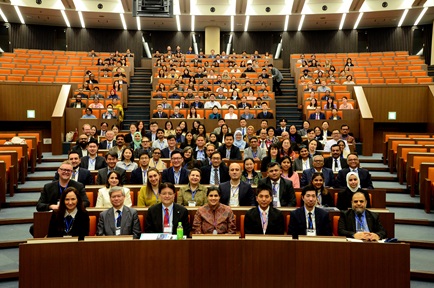Global Value Chains and Disruptions in East Asia
The concept of global value chain (GVC) emphasizes the global scale and structure of many value chains as a result of the internationalization of production.
By Nanyang Centre for Emerging Studies

Executive Summary
The world economy is grappling with the fallout from two significant social and economic shocks. First, the trade war between US and China. This conflict surfaced in early 2018, escalating until January 2020 when both countries seemed to hit a pause button with completion of their “Phase One” trade deal on 15 January 2020. The second is the evolving crisis stemming from the rampant spread of the “coronavirus” renamed COVID-19, which originated in China but is now a global pandemic.
The rapidly evolving nature of these recent shocks has led to a flurry of dire predictions. Many stakeholders have struggled to understand the ramifications of these global social and economic events. It may be too early to identify and reach consensus on the severity of all the impacts flowing from the disruptive forces unleashed by these shocks. However, analysts appear to agree that these shocks are likely to lead to declining global trade and disrupt global value chains.
Faltering global trade growth has also fueled concerns regarding the emergence of trade deglobalisation across the globe, which could significantly impact the trade-oriented East and Southeast Asian region. Visible over the last few years, this trend has at least partly been due to structural changes in value chains. The large Asian economies like China are rapidly moving up the value chain, as their companies are able to vertically integrate parts of the production process within the country rather than relying on intermediate imports.
Key questions: Are patterns of GVC led integration in the East Asian region shifting, and how have these patterns changed in the wake of the US-China trade war? This issue report surveys the dynamics of GVCs in the East Asian region over the last two decades, based on available data on value-added trade. It also presents insights into emerging patterns of production relocations that follow from the US-China trade war and comments briefly on the potential impacts of the COVID-19 pandemic on global value chains.
The Nanyang Centre for Emerging Markets (CEM) is a new initiative by Nanyang Business School to establish global thought leadership on business-related issues in emerging markets. It conducts research on pressing and timely business issues in emerging markets through a global research platform of leading scholars and institutional partners. It closely interacts with corporate partners to identify research topics and manage the research process. Its research outputs include valuable and relevant implications for sustained profitable growth for local and multinational compnies in emerging markets. It delivers a variety of research reports and organises forums, seminars, CEO roundtables, conferences, and executive training programmes for broad dissemination of its research outputs.
Read full report here.







